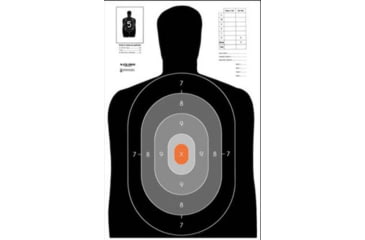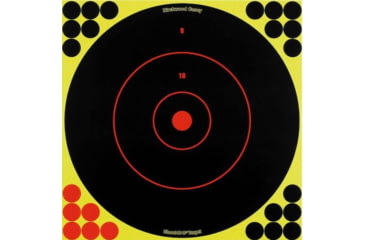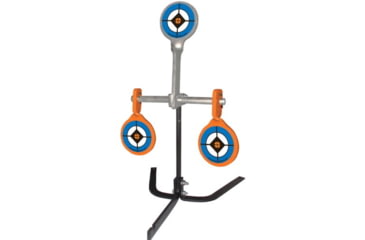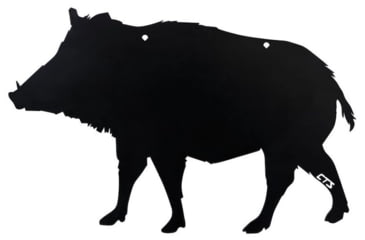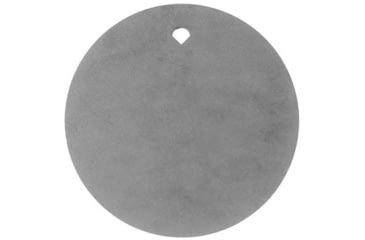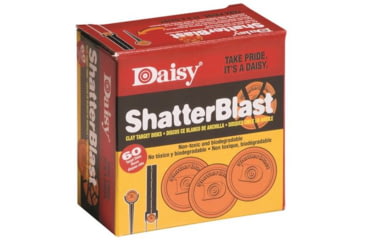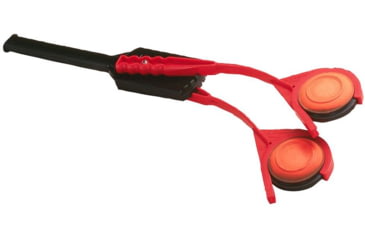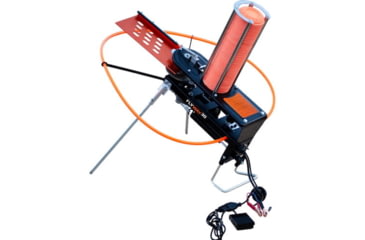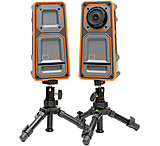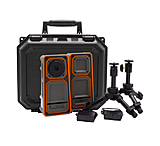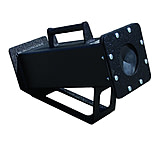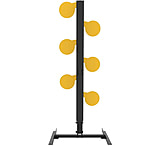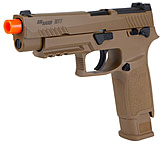Shooting targets make shooting more interesting, to say the least. They do more than just give firearms a purpose, though. A shooting target signals if you’ve aimed your gun correctly and in turn, you’ll get an idea of how to help improve your accuracy and reflexes. But this is more or less common sense. What isn’t, though, are the types of gun targets that are commercially available and how to use them.![]()
There are four primary kinds of targets you can buy. These include paper, reactive, clay, and explosive. This article will cover each type of target, their benefits, and anything extra you might need to know.
Paper Shooting Targets
Paper targets are the most basic and affordable. They range from a simple bull’s eye to silhouettes to splatter. The best use of paper shooting targets, or your typical shooting range targets, is for testing or correcting accuracy with any type of firearm but especially handguns and rifles. The purpose is to take well-aimed shots, review groups and their placement, and then make adjustments as needed.
Of course, a paper target would be useless if it was not hung up. Most shooting ranges are equipped with target stands, but you might need to supply additional support like a cardboard back so it doesn’t blow around in the wind, staples or clothespins to secure the paper target to the stand, and pasties or tape to cover up old groups.
The main drawback to using a paper target is after you put so many holes in the paper, it’s done. A paper target is not reusable. That also means you have to go down range to swap it out at some point. It’s not hard. It’s just time-consuming. However, one significant advantage of paper targets is that many of them come with defined lines that match up with notches on your optic turrets. This makes it much easier to perfectly dial in your rifle scope and get the best accuracy possible.
Reactive Targets
As the name implies, reactive targets react to being shot. The reaction varies depending on the quality of the material and how the target is set up. The most common and probably best value are steel shooting targets. Ding!
You can find steel shooting targets in just about any configuration. They can be shaped like animals, gongs, or plates, and stand on the ground, hung, or oriented to the left or right. They’re primarily used for handgun or rifle shooting, but there are some designed for shotshells as well.
There are multiple benefits to using metal targets. The main benefit is that they’re reusable and good as new with a little bit of spray paint. Also, more often than not, they’re designed to reset on their own (like the spinner target) or you can reset them without going downrange.
The main drawback, though, is that not all plates are rated the same way. You have to be conscious of the distance in which you shoot and the type of cartridge you’re using. If you’re not careful, you could damage the target or the round could ricochet and spatter. For that reason, some shooting ranges do not allow reactive targets or steel plates.
Clay Targets
Clays, or clay targets, are designed to be thrown through the air and burst upon impact when hit by the propelling insides of a shotshell. While they’re often used for sport or recreational shooting, they’re meant to simulate a bird flying through the air, which is why they’re also often referred to as “clay pigeons.” When used for their intended purpose, you would only shoot at them with a shotgun, but there are stationary target stands that you can use to shoot them with a rifle or handgun.
There are a few different ways to huck a clay disc, but most of them require having a partner on the scene. No, they wouldn’t throw it like a frisbee, but rather use an apparatus like a handheld clay thrower or a mechanical clay target thrower. Still, some disc throwers are designed (or have attachments) so you can operate them independently.
There aren’t really any drawbacks to clay targets except that they’re messy, but you buy them knowing they’re going to break.
Exploding Targets
Obviously, an exploding target explodes when you shoot it, but how they explode varies. The most common are binary explosive targets. They don’t actually meet the legal definition of an explosive, so they’re not regulated by the federal government. A binary explosive uses two separate chemicals that must be mixed together and then struck with a high-velocity projectile to detonate.
Typically, binary explosive targets don’t cause fires, but the risk still exists, and companies that make them also advise that you do NOT use them to blow stuff up like an old dishwasher or car because that will create shrapnel. For these reasons, some states do regulate binary explosives, particularly during wildfire season.
The other exploding target is more affordable, simple, and you can find pretty much anywhere. It’s any unopened carbonated beverage. But you can also find devices to pressurize bottles and use them the same way.
Parting Shots
In this article, we went over four types of targets that are commercially available. These include paper targets, steel targets, clay targets, and explosive targets.
Before you bring any of these gun targets to your shooting range, you should check with the Rangemaster and find out what is and isn’t allowed. And in the case of exploding targets, you should follow state, local, and manufacturer guidelines before setting up.
For more shooting and gear tips, check out the How-To Guides on OpticsPlanet!
